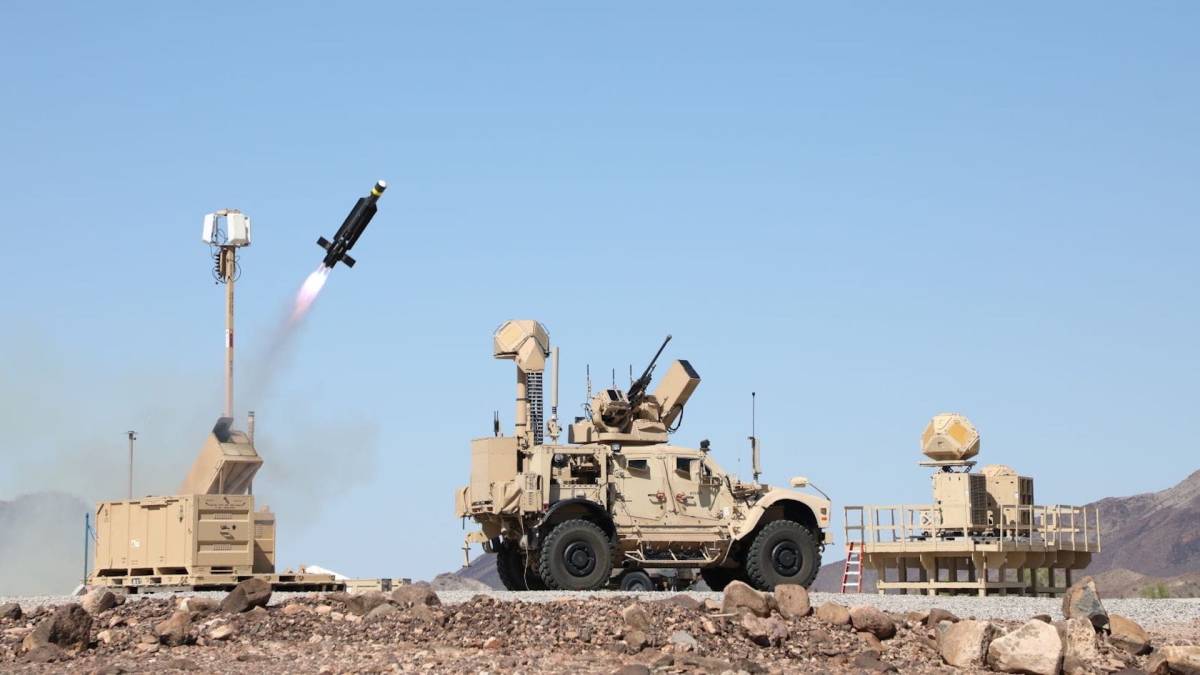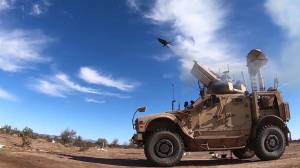Army seeks more than $400M in fiscal 2025 for systems to counter small drones

To help meet a growing demand for tools to defeat adversaries’ kamikaze drones and other types of small unmanned aerial systems, the U.S. Army’s fiscal 2025 budget request includes funding for a variety of kinetic and non-kinetic counter-drone capabilities.
Giving soldiers additional capabilities to protect themselves against threats from above is a top modernization for the service. American troops in the Middle East under U.S. Central Command have repeatedly come under attack.
“The world awoke to this threat after Oct. 7 of last year [when adversary UAS assaults ramped up in the Middle East after the Israel-Hamas conflict intensified], but the Army has been under attack for years in Centcom. We have worked very quietly in a lot of ways with our industry partners, a whole range of them to provide on the ground counter-UAS capabilities over a number of years starting before I arrived. That is paying off now in combat. So while we have taken losses — this is a conflict — we would have taken a lot more if that work hadn’t been done by my predecessor and then my team since I arrived to get more stuff to Centcom. And we have to keep going on that even faster,” Doug Bush, the Army’s acquisition chief, said last week at the McAleese Defense Programs Conference.
Gen. Randy George, the chief of staff, suggested that long-term force planning will also need to account for drone threats.
“One of the big things that we are focused on with this new Army structure document is how are we going to have to fight in the future … We know we’re going to need more counter-UAS batteries and more counter-UAS inside of our formation. So we are focused on that,” he said at the McAleese event.
On Monday, the Army released its budget request for the next fiscal year.
“I do want to mention a continued emphasis on counter-small UAS capabilities,” Undersecretary Gabe Camarillo told reporters during a budget preview ahead of the official rollout.
The funding plan includes $447 million for related programs, according to the Army, including money for the mobile and fixed-site LIDS family of systems. The acronym LIDS stands for “low, slow, small UAS integrated defeat system.”
LIDS capabilities include a suite of sensors, command-and-control tools and weapons designed to detect, track and take out enemy drones that are in the Group 1-3 categories of unmanned aerial systems.
For mobile LIDS, the service wants $82.5 million for procurement and $6.6 million for research, development, test and evaluation. For fixed-site LIDS, it’s requesting $26.4 million for procurement and $20.2 million for RDT&E.
It also seeks $116.3 million to procure Coyote interceptors (plus $10.3 million for RDT&E), $33.6 million for “C-UAS effectors,” and $28.5 million for procurement related to “ground readiness.”
The Army request also includes $140 million for research and development of various directed energy systems, according to Camarillo. For example, the service wants $31.6 million for RDT&E for the Indirect Fire Protection Capability (IFPC) high-energy laser, $4 million for RDT&E for the IFPC high-power microwave, and $88.5 million for RDT&E of a mobile short-range air defense (M-SHORAD) directed energy capability.
The Army is also requesting more than $500 million for counter-drone tech as part of a larger supplemental funding package for fiscal 2024.
“Our investments in critical munitions as well as counter-small UAS are two good examples of where we are dependent not only on the base budget, but the supplemental to get where we need to go to,” Camarillo told reporters.
Army officials see opportunities for tech insertion to improve existing capabilities.
“We’ve been developing counter-UAS systems for a number of years and fielding a lot — primarily to Centcom. The Coyote missile, for example, was started as a counter-UAS missile. That’s one of the most effective ones we have right now. So you will see additional funding for those things. However, it’s not a locked configuration … There’s not like a new program [transitioning from R&D into production in 2025], but I think if you compare what we want to buy in ‘25 for FS-LIDS to what we bought two years ago, it’s different and better. So there’s also a big supplemental aspect to our counter-UAS plans in the near term … That would be enormously helpful,” Bush told DefenseScoop during the budget preview with reporters.
“The big increases in dollars are those supplemental things and also two rapid acquisition contracts we awarded after Oct. 7 to increase production of two different interceptors in response to, you know, the situation in the Middle East. So I think we don’t want to wait ’til FY ’25. So, you know, we need that procurement now. And then, as the situation evolves, you know, this could be a running conversation with Congress about potential need for additional counter-UAS investments in the near term, not just in ’25,” he added.






